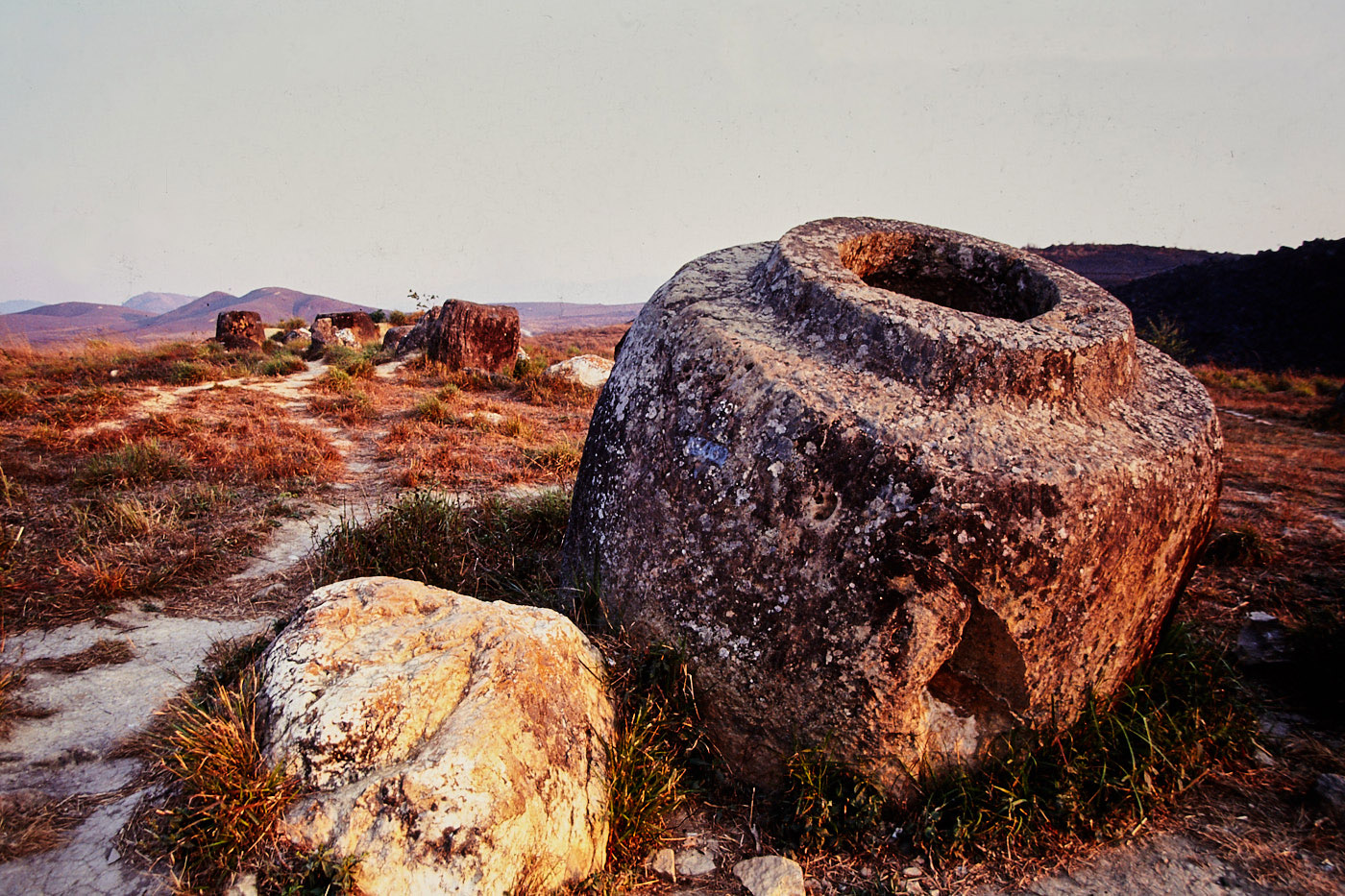Lifting the lid off the Plain of Jars

Lifting the lid off the Plain of Jars … just a little
In an area of Xieng Khouang Province in northern Laos there are thousands of old stone jars scattered over various sites. Some are as much as three metres high and weigh several tons. No one really knows what the megaliths were for, who put them there and, until very recently, how long they have been there.
The area is known as the Plain of Jars and studying them, in recent years, has not been possible. During the Vietnam war, between 1964 and 1973, Laos earned the dubious distinction of becoming the most heavily bombed country on earth with a lot of the bombs being dropped on Xieng Khouang Province. In his book The Ravens: The Men Who Flew in America’s Secret War in Laos, Christopher Robbins says that over two million tons of ordinance over 580,000 missions were dropped. That is the equivalent of a planeload every eight minutes, every day for nine years.
You might also like: Watching the river flow – Luang Prabang 25 years ago
A lot of it failed to explode and it remains, poisoning the land, to this day. The vast majority of what is lying there now are tennis ball sized bomblets from cluster bomb units. Unlike mines these are not equipped with a hair trigger or designed to blow a leg off at the slightest touch but a whack from a farm implement or an archaeologist’s trowel can be enough to detonate them. Since the end of the war over 20,000 people have been killed by unexploded ordinance (UXO).
Whiskey in the jars?
Speculation, over the years, has suggested that the jars could have been used to collect rainwater or to store food and alcohol. Another popular theory is that they were used in ancient burial practices. So far less than ten percent of the of the sites have been studied but skeletal remains have been found and radiocarbon dated to between the ninth to the thirteenth centuries CE. This might seem to support the latter theory.
Now, according to an article titled Dating the Megalithic Culture of Laos published on PLOS in March 2021, geochronological analysis suggests a probable quarry source for one of the largest megalithic jar sites at Phou Keng some eight kilometres away. Further more using optically stimulated luminescence (OSL) dating researchers have been able to establish that some of the jars were placed in their current locations as much as four thousand years ago.
So the origin of the jars pre-dates any evidence so far of funeral or burial practices by quite a margin and it is still not known how the massive things were moved there in the first place. But I am sure that the scientists and archeologists will one day arrive at an explanation.
I visited the plain in the 1990s. Back then there were no other tourists, no tours and no visitor centre. There had also been no clearance of UXOs, as far as I was aware, so my visit was quite brief and my tread very careful indeed. Nevertheless, in the late afternoon sun with a gentle breeze that had nothing more than a few tufts of grass to play with, the sense of mystery was palpable.